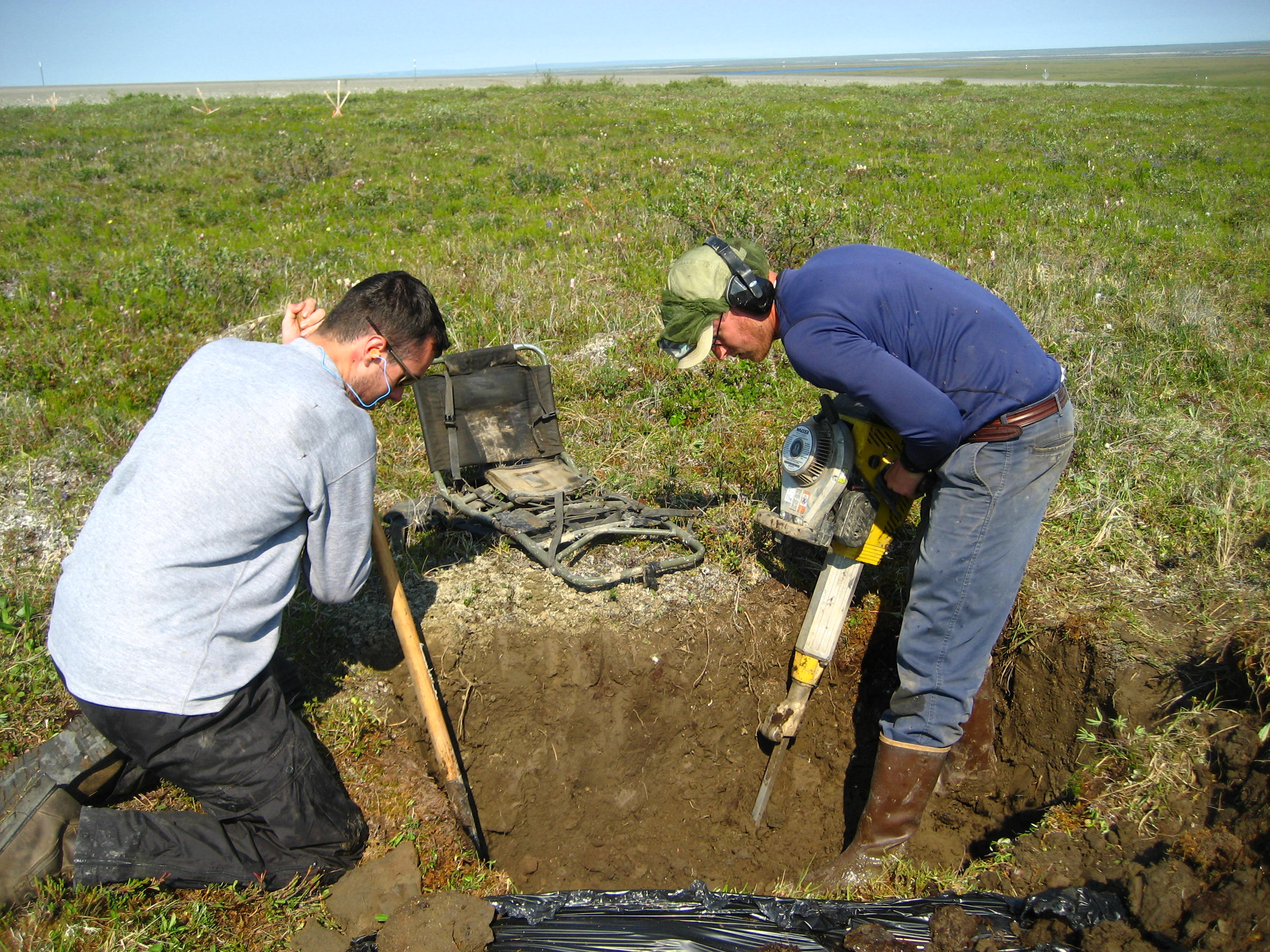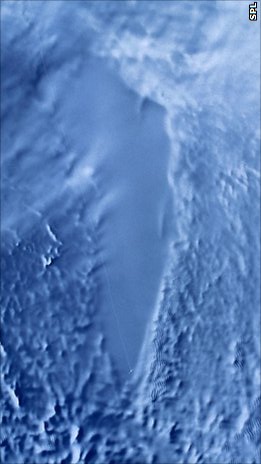|
First International Polar Year
The International Polar Years (IPY) are collaborative, international efforts with intensive research focus on the polar regions. Karl Weyprecht, an Austro-Hungarian naval officer, motivated the endeavor in 1875, but died before it first occurred in 1882–1883. Fifty years later (1932–1933) a second IPY took place. The International Geophysical Year was inspired by the IPY and was organized 75 years after the first IPY (1957–58). The fourth, and most recent, IPY covered two full annual cycles from March 2007 to March 2009. The First International Polar Year (1882–1883) The First International Polar Year was proposed by an Austro-Hungarian naval officer, Karl Weyprecht, in 1875 and organized by Georg Neumayer, director of the German Maritime Observatory. Rather than settling for traditional individual and national efforts, they pushed for a coordinated scientific approach to researching Arctic phenomena. Observers made coordinated geophysical measurements at multiple locatio ... [...More Info...] [...Related Items...] OR: [Wikipedia] [Google] [Baidu] |
IPY SPb2008 Press Conference
IPY or Ipy may refer to: * International Polar Year, year of international research focused on the polar regions * Ipy (goddess) Ipy is an ancient Egyptian goddess of fertility. She is also known as Opet. At Karnak she is called Ipet, and in the Demotic Magical Papyrus, she is called Apet, the mother of fire. She is depicted as a hippopotamus. She is sometimes depicted a ..., an ancient Egyptian mother goddess depicted as a hippopotamus * Ipy (noble), a court official who was part of the 18th Dynasty of Ancient Egypt {{disambiguation ... [...More Info...] [...Related Items...] OR: [Wikipedia] [Google] [Baidu] |
Oslo
Oslo ( or ; ) is the capital and most populous city of Norway. It constitutes both a county and a municipality. The municipality of Oslo had a population of in 2022, while the city's greater urban area had a population of 1,064,235 in 2022, and the metropolitan area had an estimated population of in 2021. During the Viking Age, the area was part of Viken. Oslo was founded as a city at the end of the Viking Age in 1040 under the name Ánslo, and established as a ''kaupstad'' or trading place in 1048 by Harald Hardrada. The city was elevated to a bishopric in 1070 and a capital under Haakon V of Norway around the year 1300. Personal unions with Denmark from 1397 to 1523 and again from 1536 to 1814 reduced its influence. After being destroyed by a fire in 1624, during the reign of King Christian IV, a new city was built closer to Akershus Fortress and named Christiania in honour of the king. It became a municipality ('' formannskapsdistrikt'') on 1 January 1838. ... [...More Info...] [...Related Items...] OR: [Wikipedia] [Google] [Baidu] |
IPY Joint Committee At IPYOslo2010
IPY or Ipy may refer to: * International Polar Year, year of international research focused on the polar regions * Ipy (goddess) Ipy is an ancient Egyptian goddess of fertility. She is also known as Opet. At Karnak she is called Ipet, and in the Demotic Magical Papyrus, she is called Apet, the mother of fire. She is depicted as a hippopotamus. She is sometimes depicted a ..., an ancient Egyptian mother goddess depicted as a hippopotamus * Ipy (noble), a court official who was part of the 18th Dynasty of Ancient Egypt {{disambiguation ... [...More Info...] [...Related Items...] OR: [Wikipedia] [Google] [Baidu] |
Permafrost
Permafrost () is soil or underwater sediment which continuously remains below for two years or more; the oldest permafrost has been continuously frozen for around 700,000 years. Whilst the shallowest permafrost has a vertical extent of below a meter (3 ft), the deepest is greater than . Similarly, the area of individual permafrost zones may be limited to narrow mountain summits or extend across vast Arctic regions. The ground beneath glaciers and ice sheets is not usually defined as permafrost, so on land, permafrost is generally located beneath a so-called active layer of soil which freezes and thaws depending on the season. Around 15% of the Northern Hemisphere or 11% of the global surface is underlain by permafrost, covering a total area of around . This includes large areas of Alaska, Canada, Greenland, and Siberia. It is also located in high mountain regions, with the Tibetan Plateau being a prominent example. Only a minority of permafrost exists in the Southern Hemi ... [...More Info...] [...Related Items...] OR: [Wikipedia] [Google] [Baidu] |
Subglacial Lake
A subglacial lake is a lake that is found under a glacier, typically beneath an ice cap or ice sheet. Subglacial lakes form at the boundary between ice and the underlying bedrock, where liquid water can exist above the lower melting point of ice under high pressure. Over time, the overlying ice gradually melts at a rate of a few millimeters per year. Meltwater flows from regions of high to low hydraulic pressure under the ice and pools, creating a body of liquid water that can be isolated from the external environment for millions of years. Since the first discoveries of subglacial lakes under the Antarctic Ice Sheet, more than 400 subglacial lakes have been discovered in Antarctica, beneath the Greenland Ice Sheet, and under Iceland's Vatnajökull ice cap. Subglacial lakes contain a substantial proportion of Earth's liquid freshwater, with the volume of Antarctic subglacial lakes alone estimated to be about 10,000 km3, or about 15% of all liquid freshwater on Earth. As ... [...More Info...] [...Related Items...] OR: [Wikipedia] [Google] [Baidu] |
Ice Sheets
In glaciology, an ice sheet, also known as a continental glacier, is a mass of glacial ice that covers surrounding terrain and is greater than . The only current ice sheets are the Antarctic ice sheet and the Greenland ice sheet. Ice sheets are bigger than ice shelves or alpine glaciers. Masses of ice covering less than 50,000 km2 are termed an ice cap. An ice cap will typically feed a series of glaciers around its periphery. Although the surface is cold, the base of an ice sheet is generally warmer due to geothermal heat. In places, melting occurs and the melt-water lubricates the ice sheet so that it flows more rapidly. This process produces fast-flowing channels in the ice sheet — these are ice streams. Even stable ice sheets are continually in motion as the ice gradually flows outward from the central plateau, which is the tallest point of the ice sheet, and towards the margins. The ice sheet slope is low around the plateau but increases steeply at the ma ... [...More Info...] [...Related Items...] OR: [Wikipedia] [Google] [Baidu] |
Glaciers
A glacier (; or ) is a persistent body of dense ice, a form of rock, that is constantly moving downhill under its own weight. A glacier forms where the accumulation of snow exceeds its ablation over many years, often centuries. It acquires distinguishing features, such as crevasses and seracs, as it slowly flows and deforms under stresses induced by its weight. As it moves, it abrades rock and debris from its substrate to create landforms such as cirques, moraines, or fjords. Although a glacier may flow into a body of water, it forms only on land“Glacier, N., Pronunciation.” Oxford English Dictionary, Oxford UP, June 2024, https://doi.org/10.1093/OED/7553486115. Accessed 25 Jan. 2025. and is distinct from the much thinner sea ice and lake ice that form on the surface of bodies of water. On Earth, 99% of glacial ice is contained within vast ice sheets (also known as "continental glaciers") in the polar regions, but glaciers may be found in mountain ranges on every c ... [...More Info...] [...Related Items...] OR: [Wikipedia] [Google] [Baidu] |
Greenland Ice Sheet
The Greenland ice sheet is an ice sheet which forms the second largest body of ice in the world. It is an average of thick and over thick at its maximum. It is almost long in a north–south direction, with a maximum width of at a latitude of 77th parallel north, 77°N, near its northern edge. The ice sheet covers , around 80% of the surface of Greenland, or about 12% of the area of the Antarctic ice sheet. The term 'Greenland ice sheet' is often shortened to GIS or GrIS in scientific literature. Greenland has had major glaciers and ice caps for at least 18 million years, but a single ice sheet first covered most of the island some 2.6 million years ago. Since then, it has both grown and contracted significantly. The oldest known ice on Greenland is about 1 million years old. Due to anthropogenic greenhouse gas emissions, the ice sheet is now the warmest it has been in the past 1000 years, and is losing ice at the fastest rate in at least the past 12,000 years. Every summer ... [...More Info...] [...Related Items...] OR: [Wikipedia] [Google] [Baidu] |
Southern Ocean
The Southern Ocean, also known as the Antarctic Ocean, comprises the southernmost waters of the world ocean, generally taken to be south of 60th parallel south, 60° S latitude and encircling Antarctica. With a size of , it is the second-smallest of the five principal oceanic divisions, smaller than the Pacific Ocean, Pacific, Atlantic Ocean, Atlantic and Indian Ocean, Indian oceans, and larger than the Arctic Ocean. The maximum depth of the Southern Ocean, using the definition that it lies south of 60th parallel, was surveyed by the Five Deeps Expedition in early February 2019. The expedition's multibeam sonar team identified the deepest point at 60° 28' 46"S, 025° 32' 32"W, with a depth of . The expedition leader and chief submersible pilot Victor Vescovo, has proposed naming this deepest point the "Factorian Deep", based on the name of the crewed submersible ''DSV Limiting Factor'', in which he successfully visited the bottom for the first time on February 3, 2019 ... [...More Info...] [...Related Items...] OR: [Wikipedia] [Google] [Baidu] |
Robin Bell (scientist)
Robin Elizabeth Bell is Palisades Geophysical Institute (PGI) Lamont Research Professor at Columbia University's Lamont–Doherty Earth Observatory and a past President of the American Geophysical Union (AGU), 2019–2021. Dr. Bell was influential in co-ordinating the 2007 International Polar Year and was the first woman to chair the National Academy of Sciences Polar Research Board. She has made numerous important discoveries with regard to subglacial lakes and ice sheet dynamics, and has a ridge, called Bell Buttress, in Antarctica named after her. Early life and education Bell received her undergraduate degree in Geology from Middlebury College in Vermont; her MPhil from Columbia University in 1980; and her PhD in geophysics from Columbia University in 1989. She received an honorary degree from Middlebury College in 2006. Bell is a passionate sailor: with her husband and two children, she has sailed across the Atlantic several times, as well as the coasts of Newfoundland and ... [...More Info...] [...Related Items...] OR: [Wikipedia] [Google] [Baidu] |
Chris Rapley
Christopher Graham Rapley (born 8 April 1947) is a British scientist and scientific administrator. He is Professor of Climate Science at University College London, a member of the Academia Europaea, Chair of the European Science Foundation's European Space Sciences Committee, Patron of the Surrey Climate Commission, a member of the scientific advisory board of Scientists Warning, a member of the UK Clean Growth Fund Advisory Board, and a member of the UK Parliamentary and Scientific Committee. His previous posts include Director of the Science Museum, London, Director of the British Antarctic Survey, Chairman of the London Climate Change Partnership, President of the Scientific Committee on Antarctic Research, Vice President of the European Science Foundation's European Polar Board, Executive Director of the International Geosphere-Biosphere Programme, and founder and leader of UCL Mullard Space Science Laboratory's (MSSL) Remote Sensing Group. Life and career Born on 8 ... [...More Info...] [...Related Items...] OR: [Wikipedia] [Google] [Baidu] |





